Just as skaters have agreements about what’s right, wrong, cool, and whack about skating, so do the people who bring us skateboarding coverage: photographers.
Photographers have been essential in creating and sustaining skateboarding’s documentation, exposure, preservation, and overall badassery. They’ve given us countless photos to cover our bedroom walls, locker doors, and tattooed selves with and obsess over.
As eager as we are to sidle up around a Love park trashcan fire and hear legendary tales of what photographers had to do to get their shots, we’re also curious to know how the business of shooting and publishing photos works. So, we hit up some professionals to sh(r)ed light on the difficult decisions they have to make to get their work seen and allow themselves to keep building skateboarding’s legacy.
Do you have to use “The Make” Photo?
Wes Tonascia (photographer):
I don’t think anyone really cares if it was the actual make or not, as long as they made the trick and it’s on film for them to see. Take for example these two photos of Brandon Westgate.
[Photo 1] This is the actual try he landed the trick, but you can see that the filmer is in the frame and there is a huge shadow on the left side of the frame.
[Photo 2] The second photo is from one the tries while he was warming up.
The fact is the second photo is better. I think as far as the photographers go, they just want to produce the best image possible for everyone, meaning the skater who worked hard to get his trick, the mags, and the sponsors.
Dan Zaslavsky (photographer/Image Processor at Thrasher):
That’s a question that’s been asked since the inception of skateboarding magazines.
If I’ve successfully shot a photo of them doing it, but they don’t come back until the next day or the next week and land it, I’m content. I don’t consider that a problem. I consider that a success. If he didn’t land it that try, but the photo looks rad, who gives a fuck?
A lot of times you’re dealing with filmers, other people in the shot, you try to make their lives a little easier, as the quality of filming has gotten better and filmers have kind of become perfectionists. They’re trying to get the photographer out of their shot as much as the photographer is trying to get them out of his. Now I will try my best to get a photo and get out of the way before the dude’s ever landed it.
Kyle Seidler (photographer):
I don’t believe it is bad to not use only lander photos. Take filming as a comparison. If someone lands a trick, the filmer will sometimes ask for a shot of the skater pushing up to the spot to do the trick. They obviously don’t need to do the trick again, it’s just to give the viewer a more theatrical experience. You wouldn’t not use a roll up shot because it wasn’t the exact way he pushed when he landed the trick. That’s the same thing when we use a “non-lander” photo. It’s pointless to shoot until the lander happens, just to get a weak photo of a land, instead of using one where the clouds were in a cool spot and the lighting was better. I don’t think that hurts the rawness of skateboarding at all, if anything it’s just making things look as cool as they really are to us skateboarders.
Jonathan Mehring (photographer):
In the early days of shooting I used to kind of get stressed about that stuff, but then I was like, I’m just psyched to get photos published. These days there’s three main mags. They all publish photos, that’s amazing.
Sometimes it’s a battle, and if they stuck it, sometimes I’ll stop shooting. I like to shoot the make, but if it’s a three hour battle and my fucking back is killing me, there’s no point in shooting more. I’ve got a hundred that look like a make, the make is gonna look exactly the same as these. It’s not creative anymore, on the skater’s part either. They’re just trying to fucking land their shit, and it might help if there’s not flashes going off or more people distracting them.
Kyle Camarillo (photographer/filmer):
As long as the trick was landed, however it looks best is the one that should go. In a video clip or a video part you want to use the best. Maybe I did this trick three times, and I want to use the best one. It’s kind of the same thing.
A lot of things can go wrong, especially since I do both video and photo stuff. Sometimes I’ll shoot until I get a photo, then go back to video and film the make. A lot of these dudes are so consistent that every try is the same. I might as well use my time shooting in a different way. I got a great fisheye, I’ll go get a long lens. That doesn’t bother me one bit. As long as it wasn’t completely ridiculous. As long as you’re not cheating.
Would you publish a photo before the trick was landed?
Allen Ying (photographer):
I’ve done it in the past, and I’ve since stopped. Basically, it’s dishonest, amateurish, greedy, embarrassing, and hurts the integrity of skateboarding. If a trick isn’t landed, don’t do anything with the photo. Don’t run it, don’t put it online. The skater could go back and do the trick, then you can do something with the photo, or another skater might do it, and they would deserve having a photo of it. Heeding to pressures from companies, sponsors, magazines, or editors to have photos is a backwards commercial attitude that hurts the integrity of a craft. Truth and reality are at the soul of skateboarding.
Aaron Smith (photographer):
If I ever publish any photo that wasn’t landed, it had to fit some kind of criteria that’s like, dude got really close, and he’s gonna come back and land it, and I need to pay rent. There’s a bunch of photos I never sent in because I knew they were never gonna come back. Surviving off of shooting skateboarding, unless you’re a staff photographer for a magazine, is really, really, really hard. Every time you go out and skate, it’s a gamble. You drive all around, hoping to god some kid nosegrinds some rail. If he works up the courage to try it but you get kicked out, and he ends up going back with another photographer, just by random chance, then that photographer’s going to be able to sell that photo, and you’re not. It’s a tough thing.
Jonathan Mehring (photographer):
Essentially, it’s up to the skater. In the beginning I would never ever think of sending in a bail. Then I had money and companies involved, asking for results, and all of a sudden we needed something but we didn’t have anything. Then it’s like, “Hey dude, what if I send this in and you go land it later?” Some guys would say yes, some would say no, and I’d respect that decision. I got pretty jaded toward the middle of my career. There was a point where I really could have cared less. I still left it up to the skater, but I would always be like, “Fuck it.” In more recent years, I’m not gonna send in a bail unless requested to by the skater. I fucking want the dude to land it.
It’s happened in the past a couple times on trips where a guy doesn’t get a trick on the whole trip, but he has a couple of photos that are bails. His company spent thousands of dollars for him to go on this trip, and either he has a photo to show for it, or he has nothing. I feel like that’s benefiting not only the skater but the company by putting out the photo, because otherwise we all look like shit. I’m not gonna name names, but recently somebody got hurt in the beginning and asked me to leave them out of the entire thing. There have been trips I’ve produced, so I had some idea of the money and effort to get that person on the trip. I basically convinced your sponsor to send you somewhere, and now you have nothing to show for it. What am I supposed to do? It sucks to be in that situation. Unless they’re vehemently against it, I would push to run the photo in that case, but that’s the only case where I would push for a bail.
Kyle Camarillo
That’s a last resort situation. It takes a lot of confidence of the photographer on the skater. The skater knows the pressure of running a bail photo, so if he says to, he’s gotta be pretty confident he’s gonna be able to make it in time. I have been hit up like, “Do you have any photos of this guy? We’re looking for an ad.” If I do and it’s something someone didn’t make, I usually don’t send it. If it’s something I feel that person can go back and get, I’ll say, “I have this photo. He didn’t land it, but we could figure out going to make it this weekend.”
I definitely 100% stray away from running bail photos. It’s pretty scary, and not just out of like, I don’t want to be that dude, but also, that’s not skateboarding to me. The little kid in me comes out, and I’d be bummed if I saw this photo and the dude didn’t make it. I don’t want to have to guess.
Dan Zaslavsky (photographer/Image Processor at Thrasher):
I used to think it was quite alright for the photo to slip by before he landed it, but I’ve since changed my belief on that. There’s a level of ethics that goes along with photos. Skating has always been a groundbreaking thing. In terms of my purpose in documenting it, it’s much more pivotal for me to get an image that I know, trick-wise, and for that skater’s caliber, is going to be groundbreaking. I think that’s what sets apart good skating from great skating nowadays. And if I decide to let that photo slip by without them actually landing it yet, I feel I have done an injustice to skateboarding as a whole.
Skateboarding progresses at a rate created by all the individuals that partake in it. Mainly the skaters. Some of it has to do with people in the background, the media personnel, and people who are creative in terms of finding cool spots or pushing their pals to do tricks they probably normally wouldn’t do. So if you’re going to go ahead and release a photo before the skater’s landed it, I think that’s wrong.
Would you run a photo of a trick that was never landed?
Saeed Rahbaran (photographer):
I’ve had one photograph that was published and unlanded: a Dekline Footwear ad of Matt Ball published sometime in 2007. This was the first photo for an advertisement I had published so I was pretty frightened. He ended up getting seriously injured weeks later and left skateboarding entirely to follow another career path. The trick was never landed by him. He’s the man though. Love you, Ball!
Wes Tonascia (photographer):
Printing a photo of a trick that has never been landed is very rare. This type of thing usually happens only if someone has been shooting an interview and gets hurt toward the end of the process. Some interviews take a couple months to a year to shoot. I also think that as skating has progressed you see more of this. Twenty years ago, tricks were way more basic and people were shooting on film and couldn’t see the image until the next day or so. With digital photography, it has given photographers a better chance and more options to produce the best possible image.
Dan Zaslavsky (photographer/Image Processor at Thrasher):
For all the times it’s happened, I don’t think there’s one reason why a photo was run and becomes a bail photo because the skater didn’t land it. There’s probably a million different reasons that could have worked against them, and did. I don’t think anyone’s collecting an archive of bail photos, but if you were to compile one and interview the skaters behind them, I’m sure a lot of them would get emotional. I think skaters would probably prefer if they could go back in time and not had those photos slip.
Aaron Smith (photographer):
I have a photo of Dustin Dollin that ran in The Skateboard Mag. We’re in a train station in Vienna, Austria, he’s tailsliding this rail right next to an escalator. The ground was slick, we had to battle people, then the cops chased us out. It was a combination of, we’re in Vienna, Austria, we got kicked out, and it’s a photo that’s not just documenting a trick. It’s showing the whole environment, what was going on throughout this moment, how people were interacting with him and everything. And it’s a tailslide down a twelve-stair, it’s not something that he hasn’t done before. It wasn’t something that was gonna propel Dustin Dollin forward in his career because I said he landed this trick.
How do you deal with poachers and pedestrian filmers?
Jonathan Mehring (photographer):
I’ve had journalistic style photographers roll up on the session and start shooting, then we get into yelling matches where they’re like, “You’re in public space, I have a right to shoot.” Which is true, but if you ask them if they got the permission of the skater, that usually shuts them down. One time a guy dropped, “I’m shooting for The Times.” Well, you’re not shooting this.
Back in the day, if I saw one person with a camera I’d be like, “No, you can’t shoot this.” It’d be like they’re poaching my shit, taking money out of my pocket. But now with everyone having a camera in their pocket, it’s impossible to control. Someone can poach it with their phone so fucking easily and you’re not even going to notice. It’s out of your hands to a great extent. With Tyshawn’s varial flip at Love, I wasn’t gonna worry about it. There’s a million people there, everyone’s on their phone, it was a feeding frenzy. Supposedly people put that shit on the internet that day.
Kyle Camarillo (photographer/filmer):
Usually I only say something to skaters. I just try to tell them how it is, “Just enjoy it. You can watch, and I’d appreciate if you don’t film and post it somewhere.” It’s good because it gets people off their phones. “This is going to be incredible, you might as well watch it with your own eyes.” If they were like, “Nah I’m filming it,” then I’d be like, “Well, we’re leaving,” and I’d tell them that they ruined it.
What’s your relationship with video and videographers?
Jonathan Mehring (photographer):
These days, video takes precedence. It pretty much deadens the photo. Tyshawn’s fifty on that sixteen stair rail never ran because they wanted to keep it for Cherry. Bill really wanted the video to come out before any of the photos, and I was like, “Why am I here?” The Skateboard Mag agreed to run an article after the fact, but that was a unique situation. It sucked because I shot so much that summer and was only able to get fifty percent of the material ran, when normally it’d be much more. It sucks to have to deal with that situation. If you don’t want it, don’t bring a photographer.
Sometimes a foreign mag will run it after the fact. Certain magazines, certain editors, maybe don’t care as much, but Thrasher’s 100% “Fuck no.” They would never run anything after the fact. Transworld’s more or less the same.
If the video’s out, I pretty much can’t do anything. Put it on Instagram. What other option do you have? A still photograph is art in a way. It leaves a lot of mystery, and that’s the key. It’s a preview, and if it’s after the fact, you’re like, “Cool photo, but I already saw this.” It’s all about the mystery. That’s why there are photographers. The photo doesn’t answer all your questions. It maybe creates more questions, then the footage answers them.
Dan Zaslavsky (photographer/Image Processor at Thrasher):
It depends on the caliber of the project, who the filmer is, who the skater is. Today, the roles have slightly been reversed. Print magazines are still around, and still important, but they’re tangible things. They don’t live in the ether. For you to receive your print magazine at your door, that takes longer than the newest video part on your computer screen. Back in the day, magazines would come to your mailbox, and that would be fairly quickly. For you to find the new video, that might take a little while. You would have to order it through CCS or hope that your skate shop got a few copies and it’s not sold out. The old protocol of having the photo come out and the footage subsequently made sense, because that’s the way most people viewed things.
But nowadays, especially with Instagram, things are seen first in the digital realm and second in the print world. It kind of screws things up. Big producers of skate videos don’t want their tricks blown out in photos. There’s more of a fan base on the internet. You base your fan base now on how many internet followers you have. You don’t base it from magazine sales or board sales. If something went viral, got so many views, and was also an epic trick, that would probably yield the magazine featuring that trick.
Kyle Camarillo (photographer/filmer):
It’s a complete nightmare. Not just because I can’t get my photo run after the footage is out, but more because, who said there’s a time limit on this stuff? Because the footage came out, no one cares about the photo anymore? If this guy’s video part comes out, and there’s a photo of his ender, I’d still look at the next issue to see the photo. I don’t care if I saw the part, I want to see this art form of a photograph. It’s a totally different way to appreciate the trick. I kind of get it from a magazine’s standpoint. They want to be the first to be able to show it, but you’re still the first to show the photo. It totally frustrates me.
We want to look at rad skateboarding, and if this is one of the raddest, new things, the hot video part, this dude that’s been killing it, then this is the thing people want to see the most. Just because the video came out, the photo’s worthless, and I have to put it on Instagram? Fuck man, I want to see it in print. I want to study that thing. I want to look at it on a full page and be like, “Look how this is composed. Look how he’s catching this. Look at his front foot on that.” You can really dissect and appreciate it.
I was able to publish my photo of Chris Joslin’s 360 flip at UC Davis only because it was literally the weekend before the video dropped. I knew it was going to be a close one so I contacted Thrasher right away, and for something like that they’ll make moves around. That one worked out, but I’ve had a bunch that didn’t. They slowly go down the chain. Ask a few magazines and all of them go, “Already saw the footage,” so then I go to Instagram. I spent all this time making this thing and you get to watch it on a 3-inch screen. Pretty cool.
Related Posts
Comments
Popular
-
 RECONTEXTUALIZING ZAK ANDERS, ONE OF TODAY’S MOST MYSTIFYING SKATERS
RECONTEXTUALIZING ZAK ANDERS, ONE OF TODAY’S MOST MYSTIFYING SKATERS
"I don’t want to be this brutal punk that hates everything that people like, and I’m trying really hard to undo that."
-
 RARELY SEEN PHOTOS FROM READ AND DESTROY, THE BELOVED BRITISH SKATE MAG
RARELY SEEN PHOTOS FROM READ AND DESTROY, THE BELOVED BRITISH SKATE MAG
Check out early documentation of London's Southbank, vert ramps tucked into Lord of the Rings-level forests, and everything in between.
-
 NAVIGATING SKATING’S HIGHS AND LOWS WITH MATT MILITANO
NAVIGATING SKATING’S HIGHS AND LOWS WITH MATT MILITANO
Over coffee and cigarettes Matt talks prank shows, ABDs and his love for the VX.
-
 A CHAT WITH LUDVIG HAKANSSON, THE OLDEST SOUL IN SKATEBOARDING
A CHAT WITH LUDVIG HAKANSSON, THE OLDEST SOUL IN SKATEBOARDING
The man loves to read Nietzche, skates in some expensive vintage gear, and paints in his own neoclassical-meets-abstract-expressionist style.
-
 MEET THE SEATTLE ARTIST WHO DESIGNED A BACON ’N EGGS INSPIRED SKATEPARK
MEET THE SEATTLE ARTIST WHO DESIGNED A BACON ’N EGGS INSPIRED SKATEPARK
Breakfast-obsessed skaters rejoice!

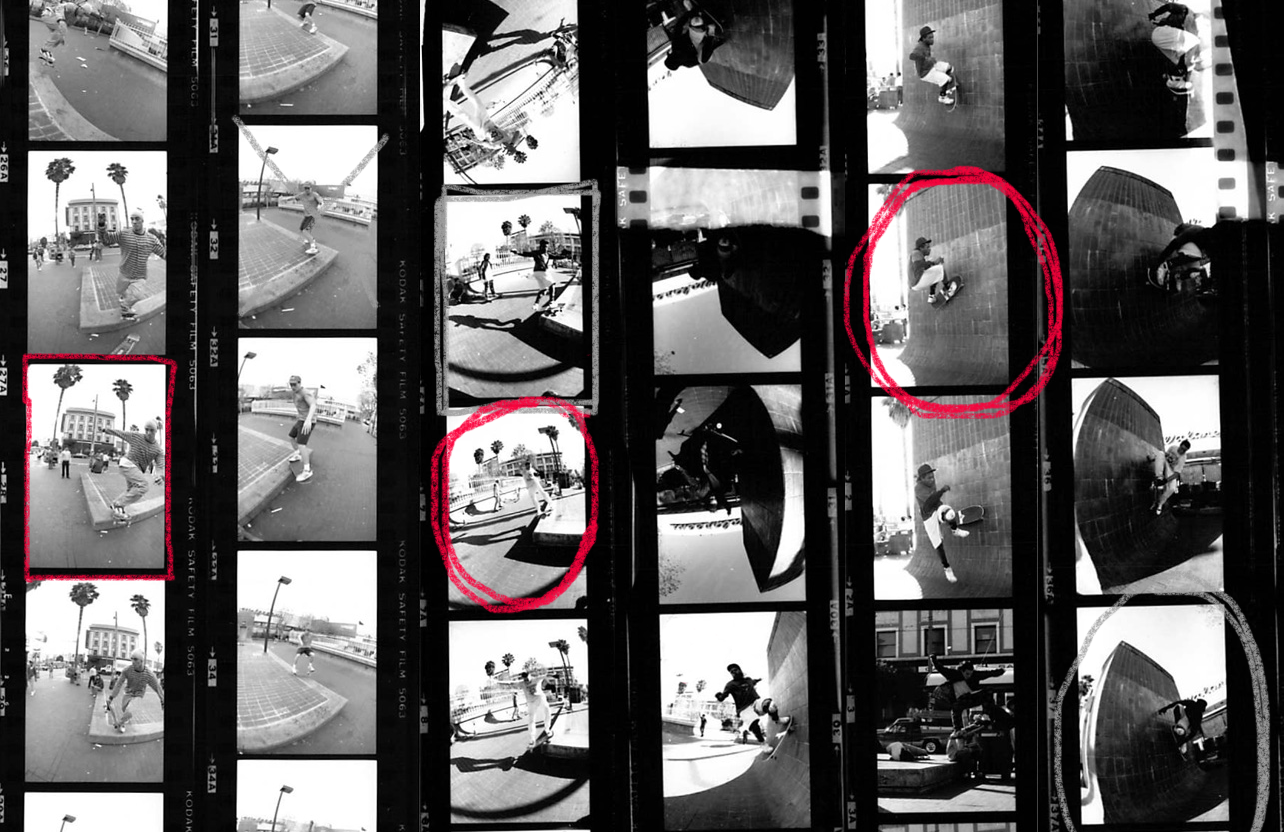
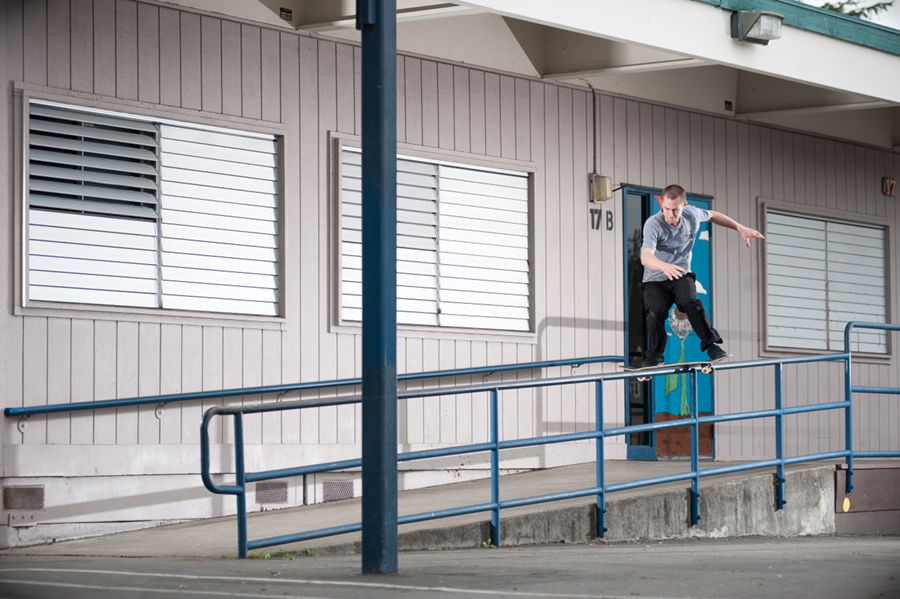
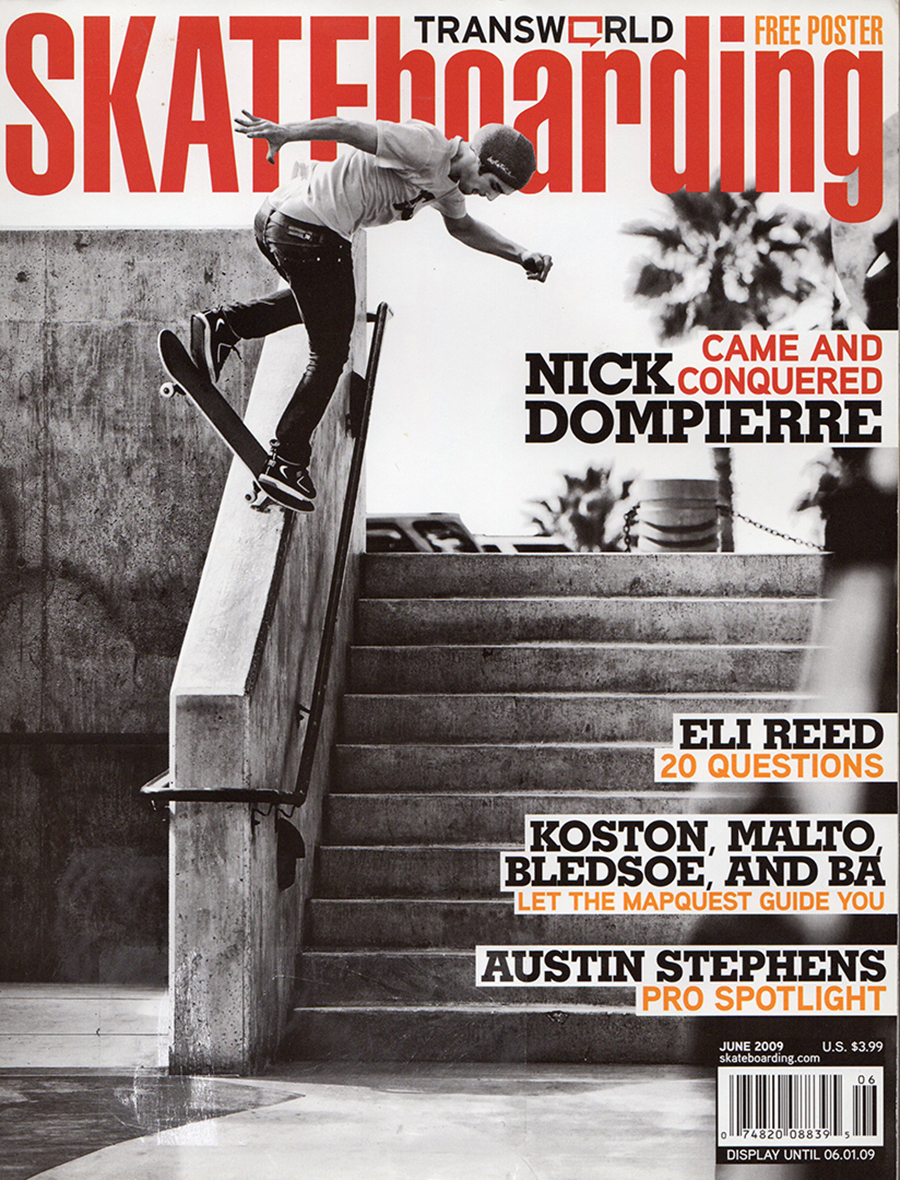
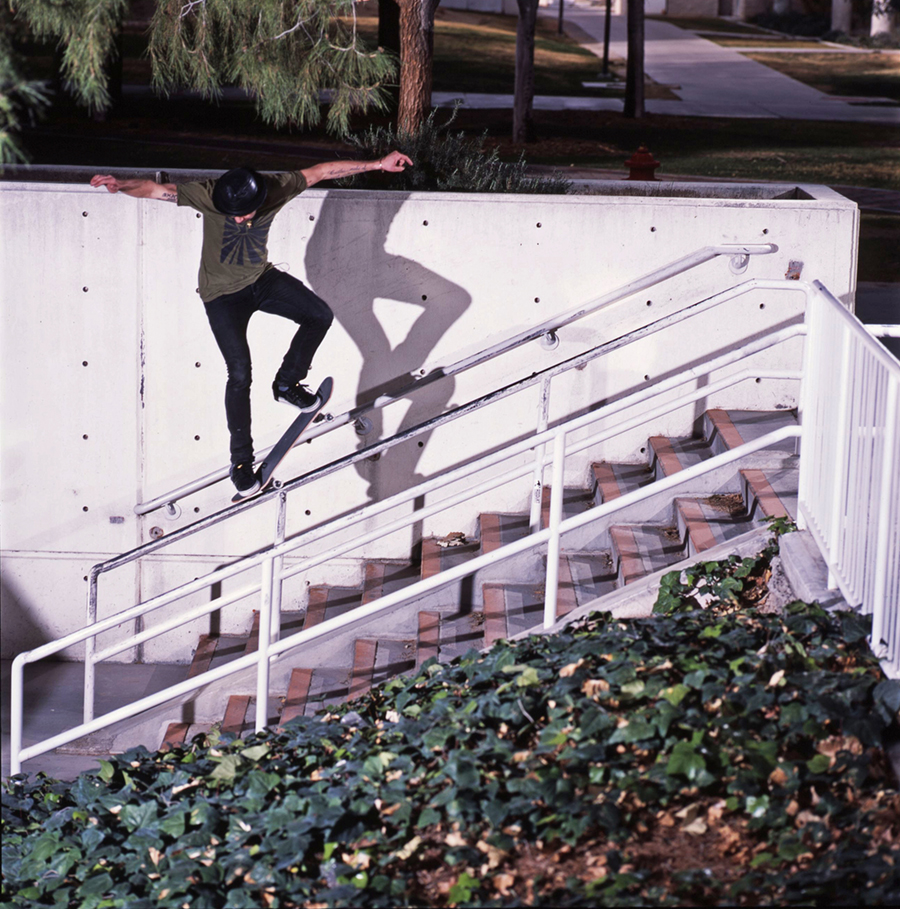
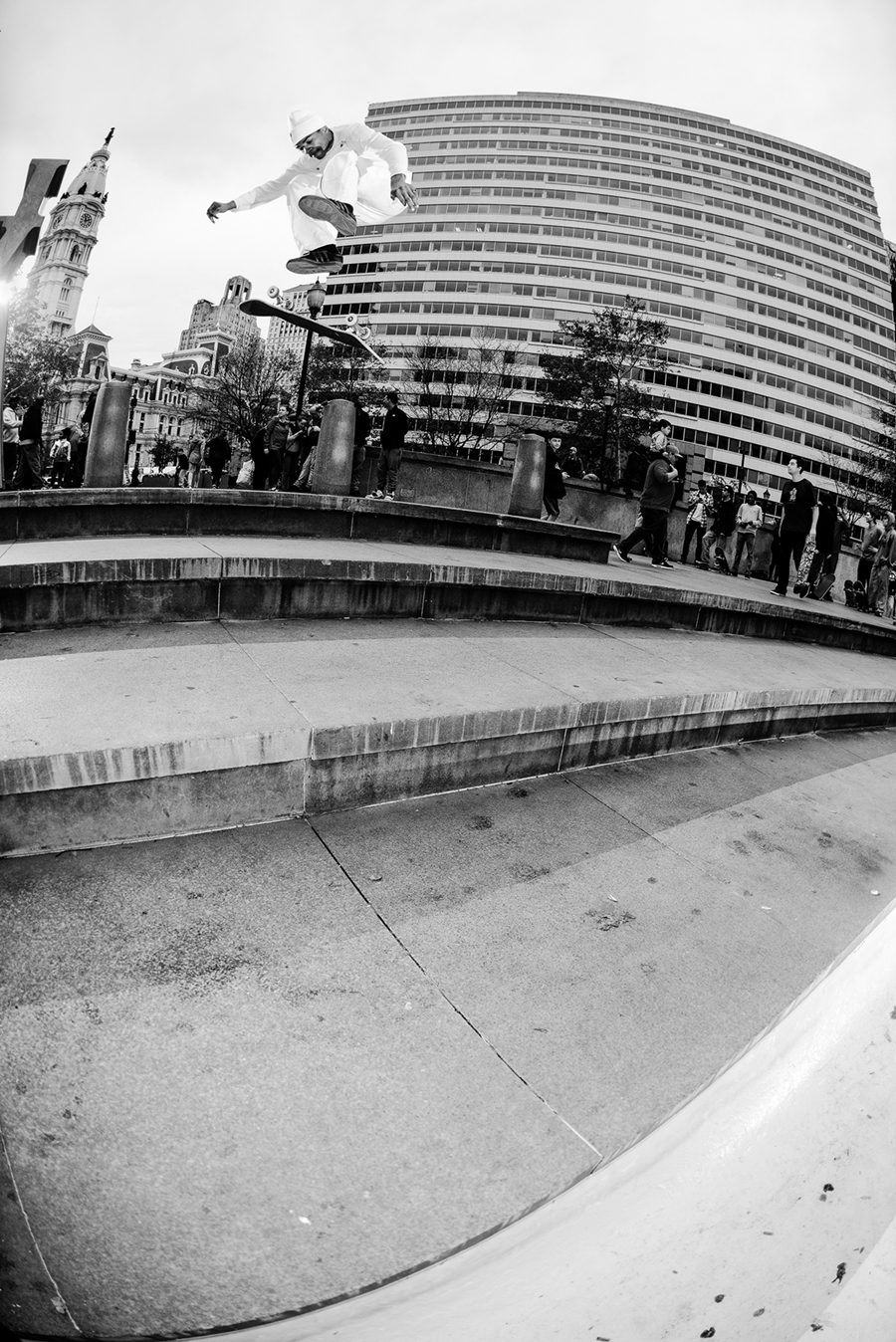
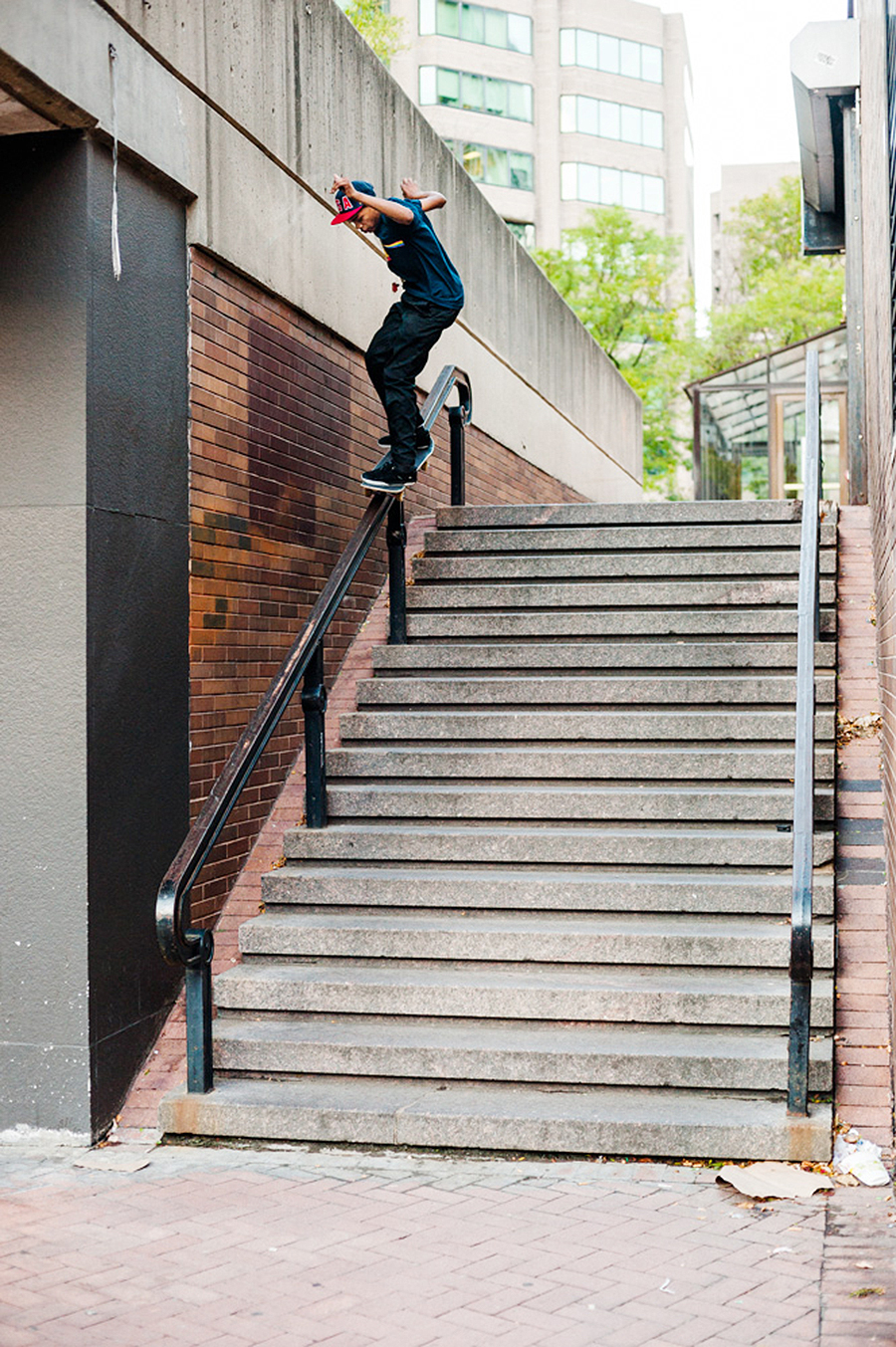
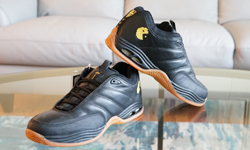

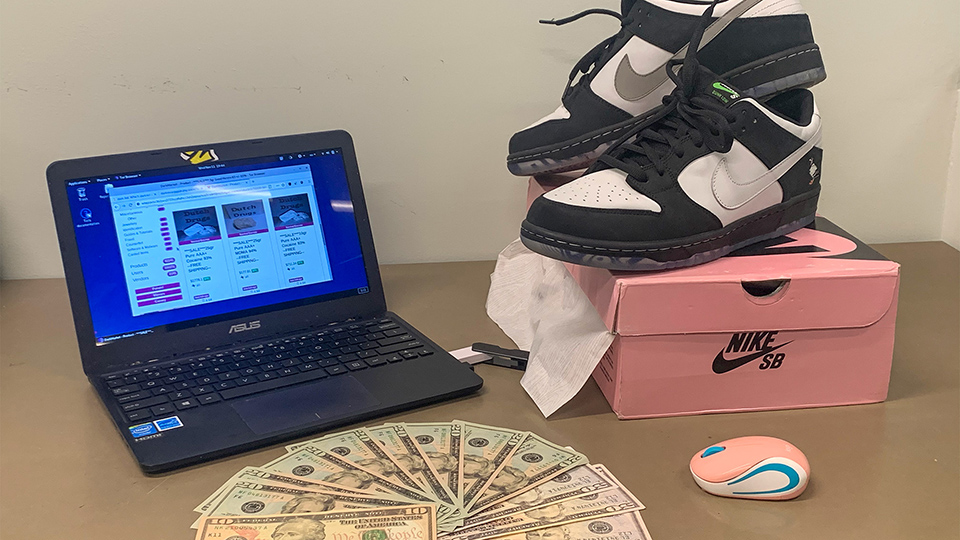
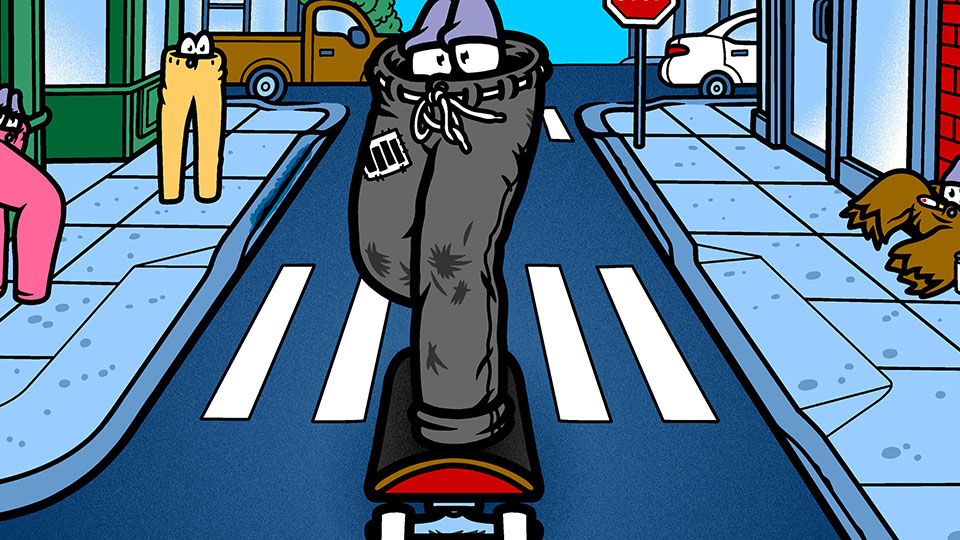
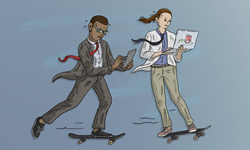
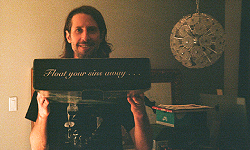
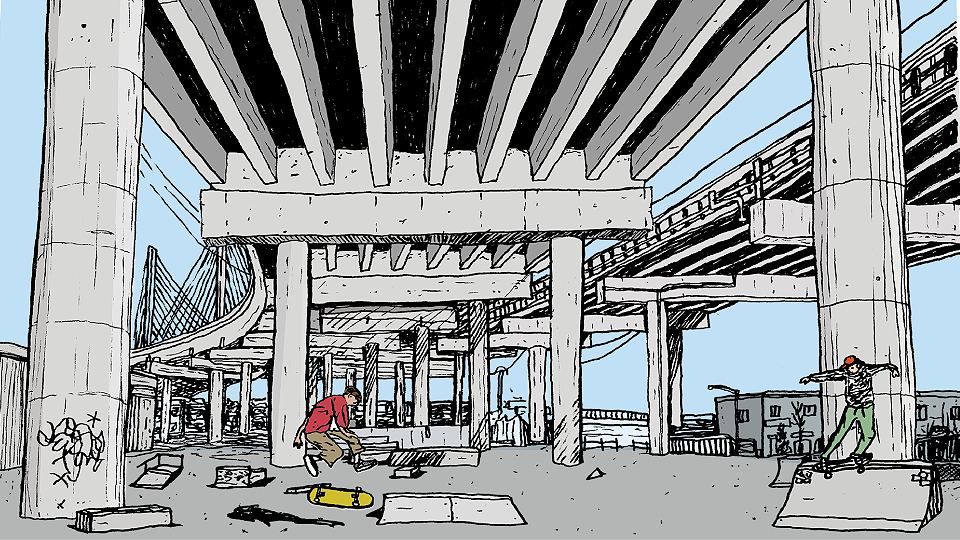
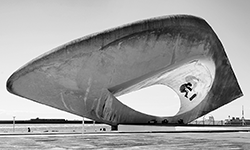
July 11, 2016 3:17 pm
Is that Ron Allen (red circle / right side) on the proof sheet? If so, fuck yes!
July 11, 2016 6:59 pm
Yes indeedy!
July 11, 2016 3:39 pm
Dustin’s photo are the types I like most. Like it was stated in the article, it creates more questions than it answers. The lady in the blue shirt and her hand gesture , like “what is going on?” I always like photos and videos where there are “civilians” around and it makes wonder, “do they have any understanding of what they are watching?” Do they have an appreciation other than “he made it.” I don’t mind a bail photo being run if there was a make at some point, and that Westgate photo is a good example.
July 14, 2016 12:54 am
I feel like with the Dollin photo they should have just printed it and said it wasn’t a make, explaining that they got chased out before he could stick it. I think it gives the photo more flavor, we all know he’s done way crazier shit, and like they said in the interviews, it kind of doesn’t matter if the photo is sick.
As an aside, one of my favorite photos of all time is very clearly not a make: http://www.jenkemmag.com/home/wp-content/uploads/2015/01/AliBoulala_25Stair_Chassignole.jpg
July 11, 2016 3:45 pm
It’s hard to agree with magazines/skate media outlets decision to not run photos after a major video release. Having the photos printed post video would be much more incentive for me to go run and grab a mag. There is so much more to the story that can only be captured by a photograph. I suppose it’s the hype that keeps the machine going and allows mags to double dip in print and web prior to a release, but the fact that there are 50% more unpublished Mehring photos out there frustrates me.
Here’s to hoping this practice changes in the future!
Great article and great perspective as always.
July 11, 2016 4:12 pm
I can’t stand politics. I blame Donald Trump